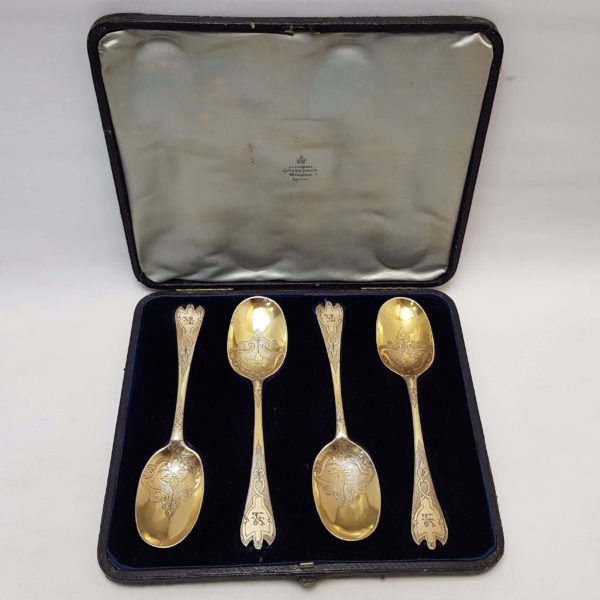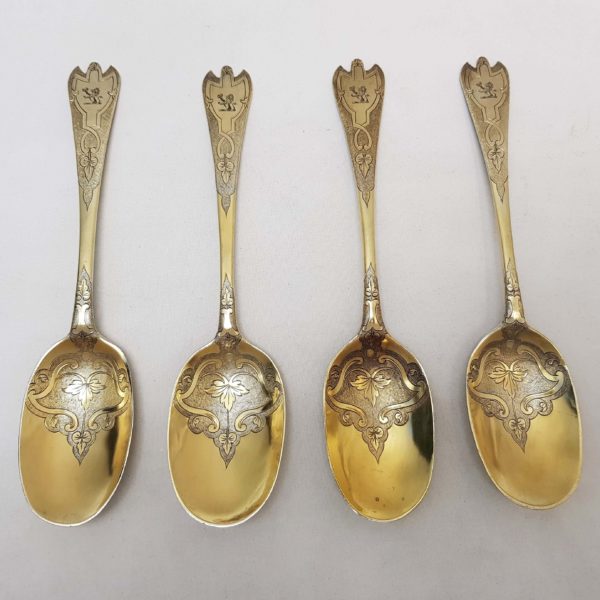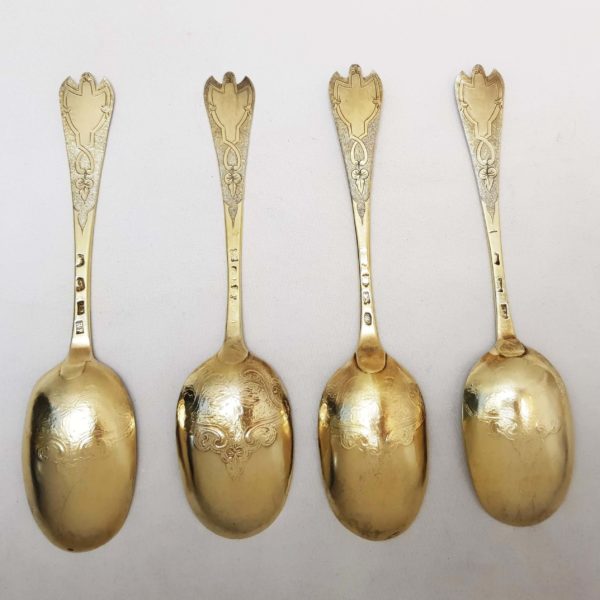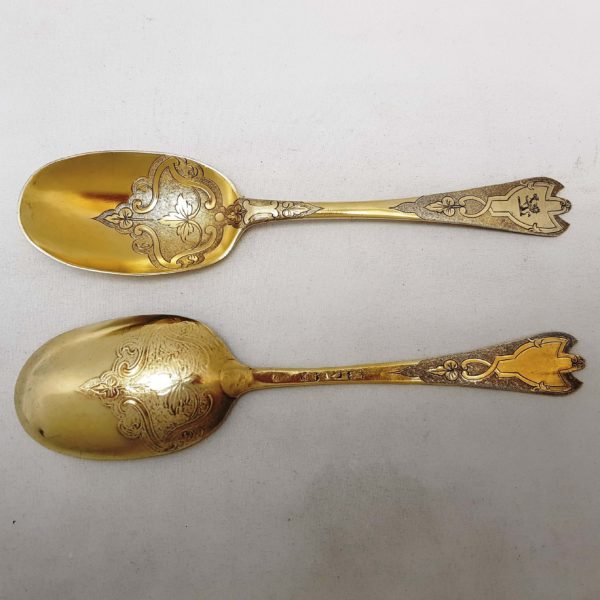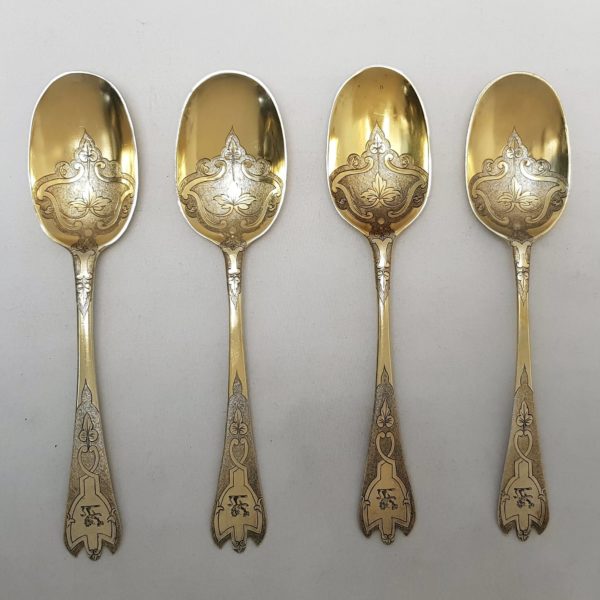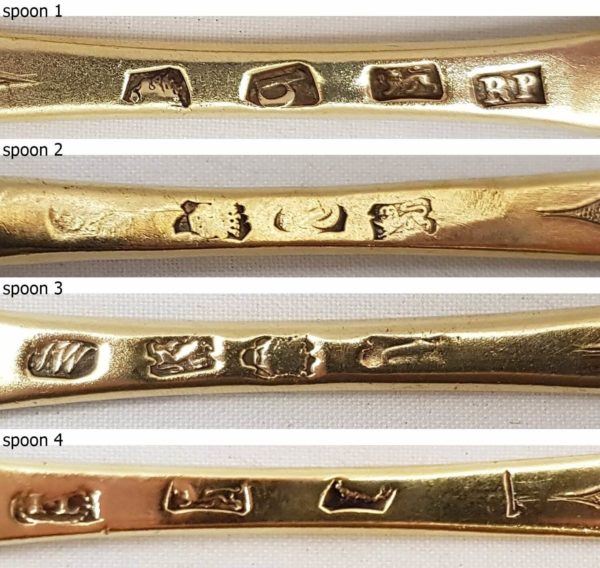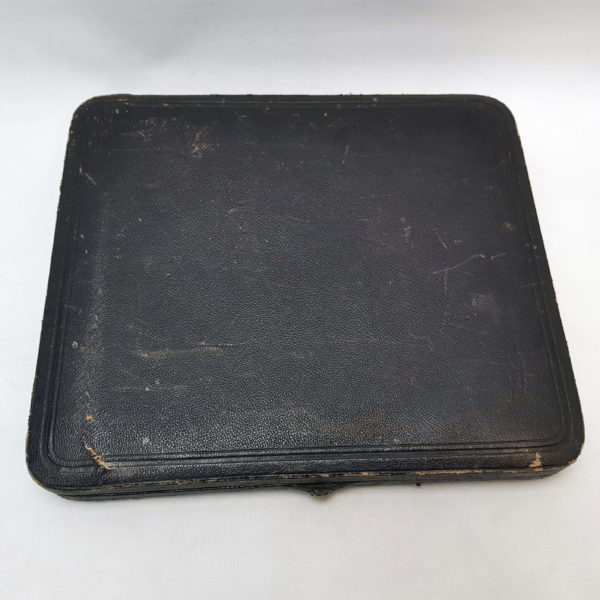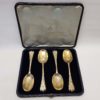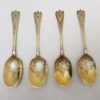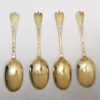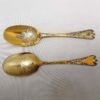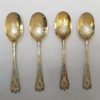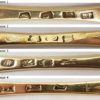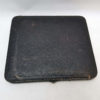Set of 4 Antique Silver Trefid Spoons
SOLD
Stock: 10252
Date: Circa 1730 - 1754
Country: England
An excellent quality harlequin set of antique silver serving spoons with shaped handle terminals known as “trefid” form. Bright gilt...
Description
Description
An excellent quality harlequin set of antique silver serving spoons with shaped handle terminals known as “trefid” form. Bright gilt finish. All with a deeply chased pattern of scroll and foliate designs on a stipple engraved ground, and a hand engraved crest of a lion holding a rose. These spoons were expertly remodelled during the 19th century from plain Hanoverian pattern spoons and fitted into a presentation box.
Total weight 216 grams, 6.9 troy ounces.
Length 20cm. Bowl 7×4.6cm.
Different makers.
London c.1730-1754.
Sterling silver.
18th century.
Marks. Stamped on the reverse with up the handle English hallmarks typical of this early period. The marks are difficult to read.
1. Maker “RP” for Richard Pargeter. Date letter “b” for 1737.
2. Unreadable
3. Maker “IW” possibly for James Wilks. Date letter “t” for 1754.
4. Maker “IL” for Jeremiah Lee . Date circa 1730.
Literature. Before the 18th century the only items of table silver made in any quantity were spoons. Early English silver spoons can date from as early as the 15th century and are highly collectible, especially spoons by rare makers and from unusual provincial towns. The most popular form of cast terminal was the seal top spoon, named after the circular disc at the top, which often bore the engraved initials of the owners. Lion sejant spoons and apostle spoons were also common from the 15th century to the beginning of the 17th century. From the late 16th century the plain flattened stem of the slip top spoon was introduced which developed during the 17th century into the popular trefid form.
Up the handle marks. On early examples of table silver when the silver marks were struck on the thin part of the stem they distorted the form of the piece and so the silversmith had to hammer this back into shape. That’s why the hallmarks are often squashed and distorted and become more easily rubbed and worn. From c.1780 onwards the Assay Office stamped table silver near the top of the stem as opposed to on the stem just below the bowl, and hallmarks are generally much clearer because there is more space on which to strike them.
Condition
All four spoons are in very good condition with minor wear to the gilding. These spoons were expertly remodelled during the 19th century from plain Hanoverian pattern spoons and fitted into a presentation box. The box is in used condition.
Maker Information
No maker assigned
Our Guarantee
Customer satisfaction is our primary concern
All silverware on our website is checked thoroughly prior to offering it for sale and every product listing contains a condition report and details of the silver hallmarks.
All items offered on our website include:
- Free Shipping Worldwide
- Tracked and Insured
- 14 day no quibble money back guarantee
- We are accredited members of LAPADA and conform to their strict professional standards
- We dispatch 1-3 days after receiving cleared payments
More detailed information about deliveries, returns and how to pay is available in the Help section at the bottom of this page.
